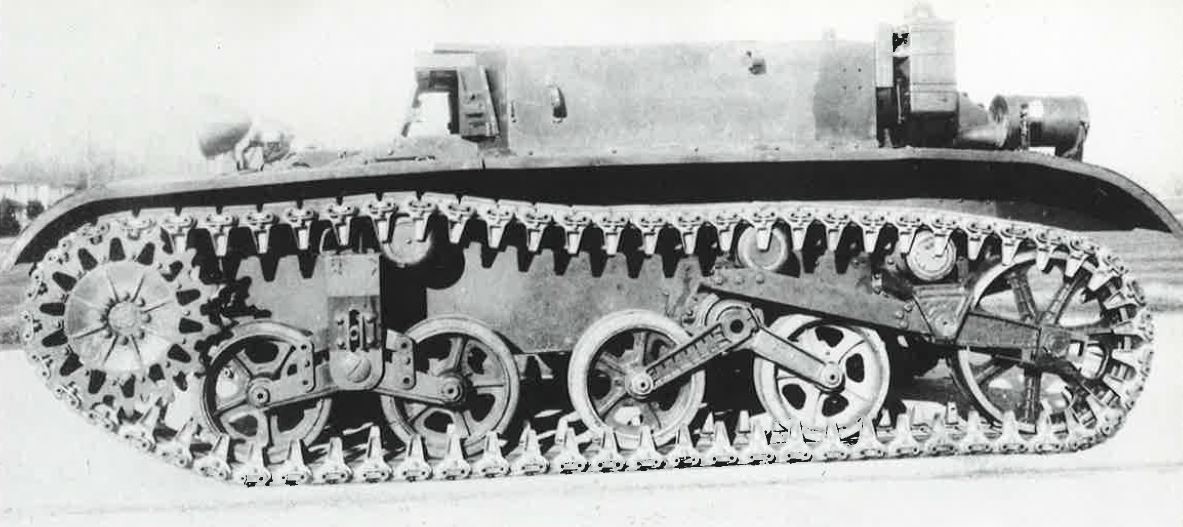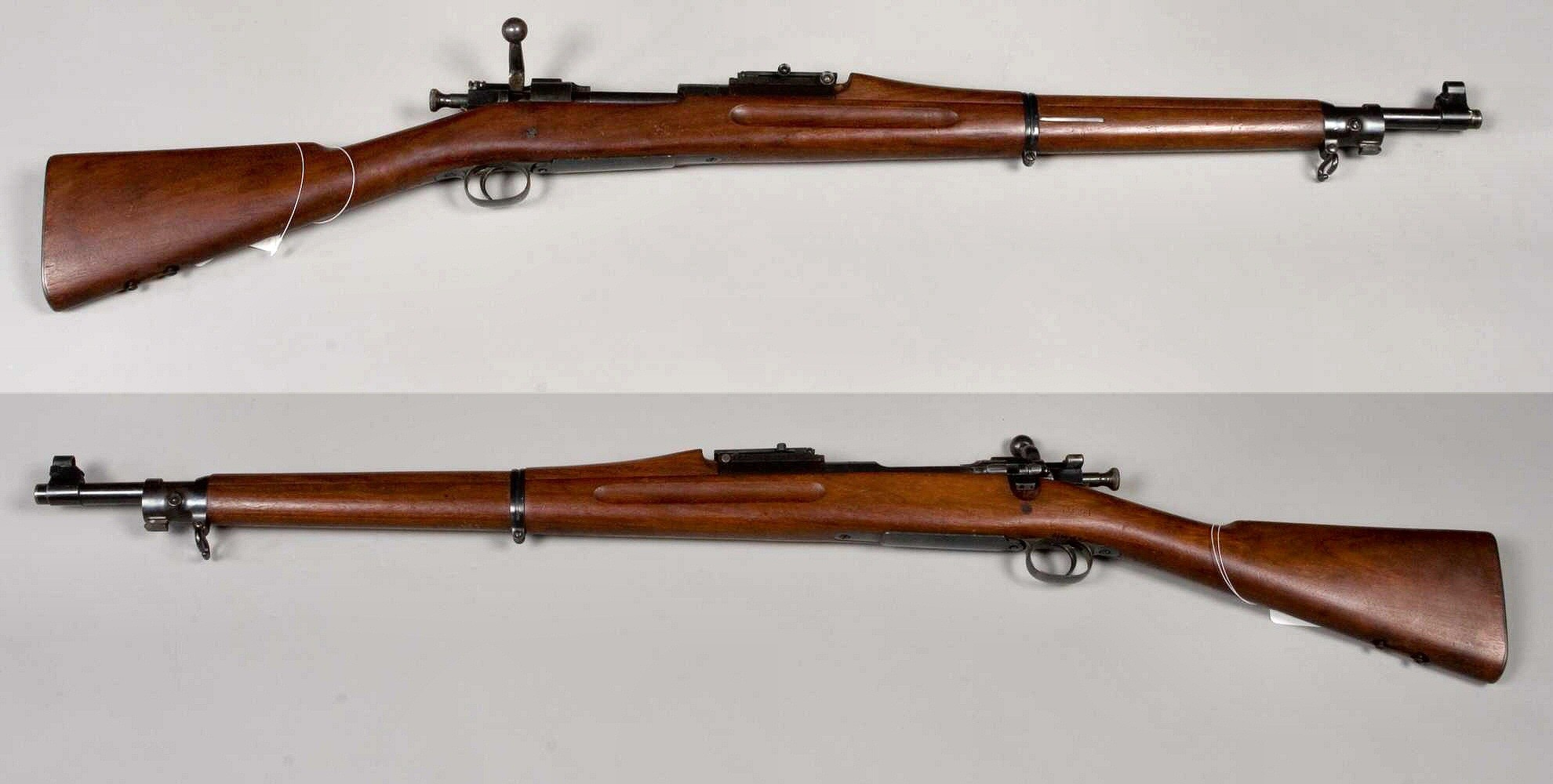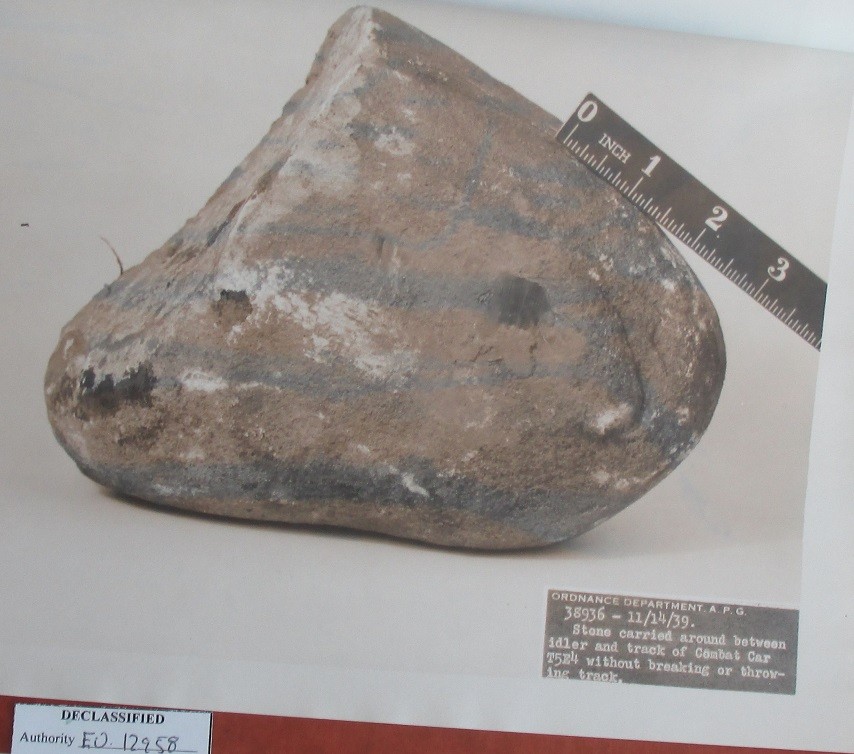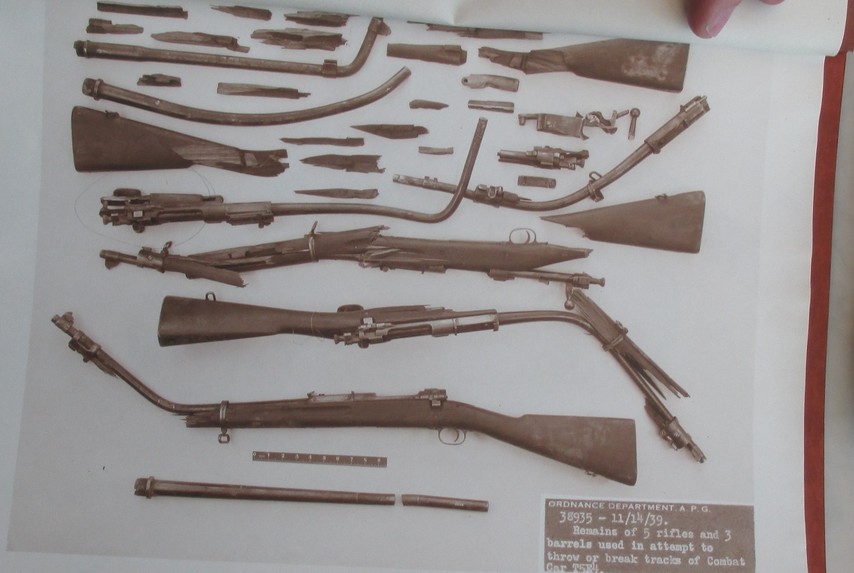
One of the great concerns that infantry had in the early war period was that, on average, the typical infantryman was at something of a disadvantage when dealing with tanks. He had a rifle, maybe a light machinegun. Hand grenades were decidedly unreliable against tanks, especially if the crew were smart enough to close the hatches. What could an infantryman do?
This became a concern for the Chief of Infantry in October 1939. COL Fredendall, executive to the Chief, wrote a letter on the 16th to the Office of the Chief of Ordnance asking for a favour.
- In the draft now under preparation of Infantry Field Manual, Volume II, “Tanks”, consideration is being given to including the following as a means which might be used by the enemy to disable our tanks: Thrusting rifle barrel between the sprocket and the track with the object of breaking the track.
- It is requested that the Ordnance Department conduct suitable tests to determine whether it would be reasonable to assume that this method would be successful. An early reply would be appreciated.
LTC Barnes thought about this for a short while, and on 02November wrote to the Commander of Aberdeen Proving Grounds to instruct him to conduct such tests, and to expect delivery of the test weapons from Springfield Armory.

Combat Car, T5E4
These tests were duly conducted on the 14th November 1939.
The report opens… “So far as it is known attempts to break or throw the tracks of light tanks or combat cars by thrusting rifle barrels between the track and the sprocket or the track and the idler have never been made at the Proving Ground.”
Probably a good reason for that. However… For Science!
Description of Material: 5x US Rifles Cal .30 Model 1903. 1x barrel from Browning Automatic Rifle. 2x .30 cal Machine Gun barrels. 1x rock. 1x Combat Car T5E4.

Rifle, cal. .30, M1903
The report then stated:
“It was found to be practically impossible to place the rifles at the desired spots in the tracks and suspension with the vehicle running at anywhere near the expected speeds cross-country in attack. Four attempts to throw a rifle between the spokes of the idler were absolute failures. The fact that the vehicles are front drive makes it very difficult to throw a rifle into the suspension in such a manner as to be carried between drive sprockets and tanks.
The test as finally carried out consisted of operating the vehicle at very slow speed, probably 1mph, in low gear, and placing the rifles and barrels with the tank in motion.
- “Stock, receiver, bolt broken, barrel bent. No effect on vehicle. Barrel rode around drive sprocket and dropped out.
- Stock broken, barrel bent, no effect on vehicle. Barrel rode around sprocket and under front bogie and dropped out.
- Broke stock, bent barrel. No effect on vehicle. Rifle rode around idler, bent when rear of engine compartment was contacted, and dropped out.
After the first three, however, the ‘infantry’ started having more success.
- Forearm broken, barrel bent. No effect on vehicle other than locking idler for turning for short distance, after which rifle fell out.
- Forearm broken, barrel bent. No effect on vehicle other than locking bogie wheel from turning for a short distance, after which rifle fell out.
- Two machinegun and BAR barrels, one broken, two bent barrels. No effect on vehicle other than locking of idler from turning for a short distance.
Having run out of issued weapons, the undeterred ‘infantrymen’ decided to adapt and improvise. A large stone, over 5” in diameter, was procured from local sources. This stone was placed in front of the idler and rode around to lodge between the idler and the rear return roller, where it did no damage. No adverse effect to the vehicle was noted, but the rock was partially damaged in its trip around the idler, with a bit breaking off, the flat spot resulting visible in the photograph below.
 ]
]
Stone, 5-inch, undesignated
It was thus concluded:
- That the standard rubber block track cannot be broken or thrown by the use of rifles or caliber .30 machine gun barrels as levers.
- That the standard rubber block track will stretch sufficiently to allow objects of five-inch diameter to pass between the idler and track without breaking the track.
- That the present standard combat car and tank suspension and tracks are very efficient manglers for rifles and machinegun barrels.
- That any operation involving the thrusting of objects into the suspension and tracks with a view to disabling the tank is likely to be very difficult if the tank is operating at any appreciable speed.
Hopefully the Infantry Branch were satisfied with the effort taken to answer their query.

There is a footnote to this. Thanks to Steve Zaloga for pointing out to me that an Technical Bulletin of 1942 instructed tank units to weld small plates over the holes in the wheels of light tanks M3, after the Japanese practice in the Philippines of trying to disable them by jamming metal rods through them.
Bob will take you to the discussion thread. Liking my Facebook page to raise my follower number will feed my ego.
